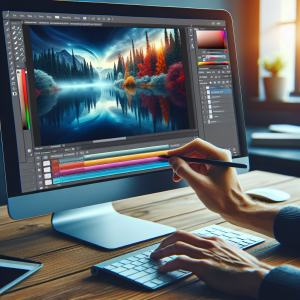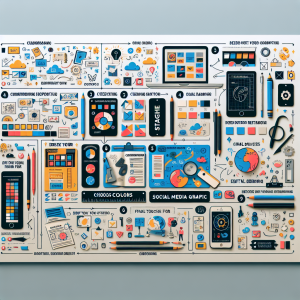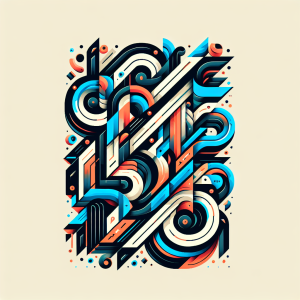

Understanding Photoshop’s Interface
Navigating Photoshop’s immensely powerful interface skillfully is the stepping-stone towards mastering this digital imaging software. Each of the workspace elements—menus, tools, and panels—has its unique functions geared towards image creation and manipulation. Recognizing the purpose and operation of these components allow a smoother, more efficient workflow, a hallmark of any seasoned Photoshop professional.
Menus, categorized into File, Edit, Image, Layer, Type, Select, Filter, 3D, View, Window, and Help, provide numerous commands for various purposes. Tools, placed on the vertically-aligned toolbar by default, offer a wide variety of commands from basic painting to advanced path creation. Panels, on the other hand, provide controls and commands for color, layers, styles, paths, channels, history, actions, and more. By arranging these workspace elements to your convenience, you may enhance your productivity and designate more time to actual creativeness.

Working with Layers
An understanding of layer dynamics propels users into advanced Photoshop proficiency. Layers act as a canvas providing flexibility to create, modify, and manage complex compositions. From introducing new layers to creating adjustment layers, blending modes, masks, clippings, and navigating the 3D layers—layers offer a cascade of possibilities.
Advanced layering technique revolves around isolating effects, non-destructively editing and experimenting with layers. Adjustment layers, for instance, offer the user an avenue to apply effects and modifications to a picture without discarding the original data. On the other hand, blending modes allow mathematical computations to control how layers interact with each other to output a unique visual synthesis.
Image Editing Techniques
Professional image editing demands an array of sophisticated techniques. From retouching photos to full-fledged image manipulation, advanced Photoshop users endeavor to maintain a keen eye for detail, aesthetics, and a sound understanding of the software’s capabilities.
High-end filters, for instance, provide an avenue for users to non-destructively apply a series of effects to all layers or targeted layers. Understanding histograms and color correction techniques ensures proper white balance, contrast, color contouring, and in turn, an accurate and visually appealing image output. Techniques such as frequency separation and dodge & burn take retouching capabilities to another level, breathing life into the images, retaining skin textures, and producing a high-quality result that a typical filter application would overlook.

Advanced Brush Techniques
Detailed brushwork often distinguishes professional-grade graphics from casual creations. Besides the basic brush tool, Photoshop offers a number of advanced features, such as creating custom brushes, adjusting brush options, exploring brush blending modes, that help in creating intricate designs.
For instance, custom brushes allow users to create unique patterns, textures, and elements that could add a distinct flair to artworks. Furthermore, using a pen tablet instead of a mouse can make brushing seem natural and effortless, paving the way for manifold creative explorations.
Smart Objects and Automation
Smart Objects epitomize Photoshop’s non-destructive editing philosophy, maintaining source content’s original properties, allowing scaling, rotation, and warping, without any degradation. Smart Objects can contain raster or vector data that can be edited repeatedly without losing original quality.
Automation is another professional’s favorite–it enables users to record tasks as ‘Actions,’ which can then be applied to other files, saving time while ensuring consistency across artworks. Actions can range from applying a filter to executing complex, multi-step tasks.
Mastering Photoshop’s advanced techniques is no small feat—it requires patience, consistent practice, and a keen eye for aesthetics. These professional-level techniques can transform competent users into digital artists, capable of creating stunning visuals and cutting-edge designs that captivate and influence viewers in myriad ways. The journey of mastering these techniques is indeed a rewarding venture, promising a blend of creativity, intricacy, and marvel.







